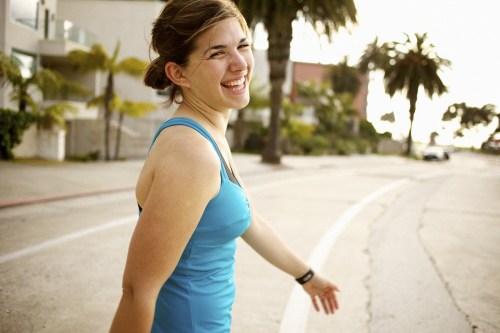How To Maximize Your Steps To Turn All 10,000 of Them Into Full-Blown Cardio Moves
Don't count walking out as a great way to get in a workout. Experts weigh in on the walking benefits for health, and how to get the most out of every step.

There are times in life when taking a break from exercise can be the best thing you can do for your mind, body, and soul. Then, there are times when you truly yearn to get your sweat on, but outer forces just… don’t let you (hello, busy schedule/impromptu social dates/sleeping through my alarm, etc.).
I recently took a five-day hiatus from anything that would make me sweat. Considering I rely on working out regularly to quell my anxiety, this situation didn’t exactly bode well for my mental health. But as a friend (hi Erica!) reminded me while I was nervous about skipping a week’s worth of workouts, “sweating” and “exercising” aren’t necessarily synonyms, and you can reap some of the same benefits you’d get in your usual HIIT class by way of good, old fashioned walking.
While walking may not spike your heart-rate the way, say, a Barry’s Bootcamp class would, that doesn’t mean it doesn’t have plenty of benefits behind it. “Walking is a fantastic cardio workout that is low-impact, while at the same time, can be a heart-racing, high intensity exercise when done properly,” says Aaptiv master trainer John Thornhill. “Brisk walking, and more specifically, walking with incline, torches calories and builds and strengthens the muscles in your posterior chain, AKA the muscles from your calves up to your back.” Plus, says New York Road Runners coach Roberto Mandje, it allows you to get your heart rate up with less pounding than running.
To get the benefits out of every single step you take—whether they’re serving as your daily workout or a supplement to your time on the treadmill—keep these trainer-approved tips in mind:
Pick up the pace: The whole “slow and steady wins the race” theory doesn’t apply to these pepped-up walking workouts. “You can get a more strenuous or challenging cardio workout while walking by simply walking faster,” says Mandje. “The faster you walk, the quicker you’ll have to move your arms to keep pace.” And on that note, be sure to move your arms while you walk—it will add a whole other level of cardio to your stride.
Take smaller steps: In addition to the speed of your steps, the size of them matters, too. “If you’re looking to add speed to your walk, shorter strides rather than longer strides will help you build your cadence and thus help increase your speed,” says Thornhill. Your step frequency and stride will ultimately be dictated by the surface you’re walking on—for example, asphalt versus trails—so keep those things in mind when deciding where to get those 10,000 steps in, too.
Pick a challenging route: While it may prove difficult to find any hardcore hills in a mostly-flat city (looking at you, New York), if you can pick a more “undulating” route, Mandje says to go for it. “You’ll maximize your walking workout by incorporating both hilly and flat terrain into your walks. This way you’ll have a wider range in your effort levels and energy output while walking,” he says. Thornhill adds that walking with challenging inclines will activate the muscles in your calves, hamstrings, and glutes significantly more than walking on a flat road, and happens to be much better for your joints.
Try interval training: Even if it isn’t your standard high intensity interval training sesh, mixing things up with interval training can help you get the most out of your time (lightly) pounding the pavement. “[It] will help boost your resting metabolism, build your lung capacity, and make your walking workouts way more productive,” says Thornhill. For a little inspo, try one of Aaptiv’s outdoor walking workouts.
Take as few breaks as possible: I’m one of those weirdos who paces around a street corner while I’m waiting for the light to change from “stop” to “walk,” but I swear there’s a method to my madness. “The less breaks you take, the longer amount of time you’re naturally, fully engaging in your chosen activity,” says Mandje. “This means that you’re keeping your heart elevated longer without resting, and therefore getting a more challenging workout than someone else who may be taking more breaks along the way.”
Surprise! 10,000 steps is the biggest scam of our generation (aside from Fyre Festival, that is). Here’s the part of your fitness routine you should be tracking instead.










